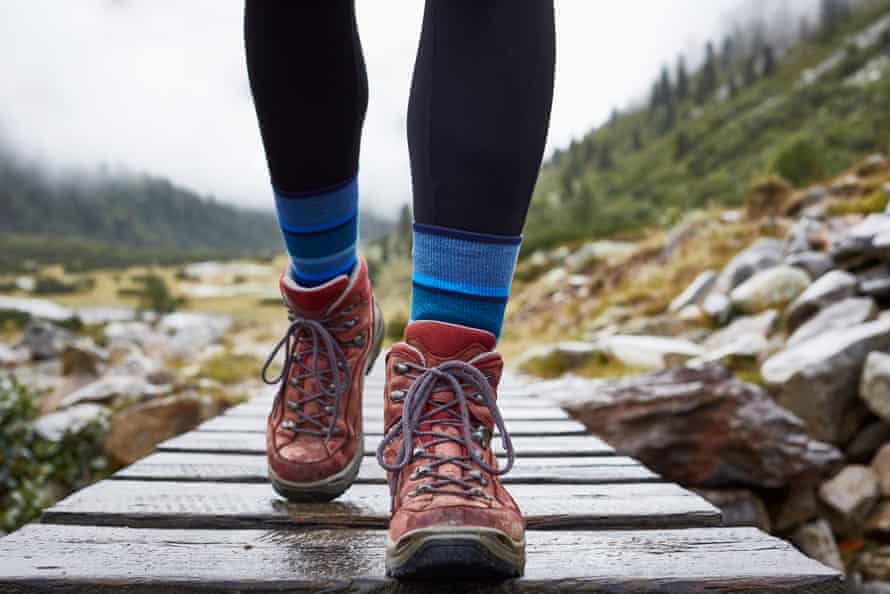
Being out in the elements requires protection from them, and as any hiker knows, an outdoor adventure will often involve getting sweaty, dusty and/or wet.
While this is part of the fun, when dirt, damp and sweat are left to linger it can shorten the life of outdoor gear; turning a cheap hobby into a very expensive one.
“Consistent laundering of gear really helps prolong the life of a product,” says Corey Simpson of Patagonia, because technical fabrics “all perform better when they’re not clogged or covered with dirt and oils”.
Washing while you hike
If you find yourself needing to wash your gear mid camping trip, Simpson says to “find a creek, stream or river to rinse the garments”.
While rinsing is fine, using soap in a stream is not. If your camp site does not have dedicated laundry facilities, clothes should be hand washed in a bucket or tub using a biodegradable soap, and the resulting grey-water should be tipped out well away from running water.
Finally, hang the clothes to dry in the sun or breeze.
What to do when it rains
Keeping gear dry is one of the most important parts of maintaining it, but this can be tricky if you find yourself caught in the rain, halfway up a mountain on a multi-day hike.
The first thing to do is shake off any excess water, then find somewhere dry to hang it. General manager of product at Kathmandu, Robert Fry, suggests inside “your tent’s vestibule” as a good drying spot, “so there’s no chance it’ll drip and wet your dry gear, like your sleeping bag”.
Using your body heat
If your down jacket has been soaked through, Simpson suggests you “shake the jacket to get the moisture off … and get the down to loft up again”. You can also use your body heat to help dry the jacket. Wear the jacket over any wicking layers you have, then rub your hands over the jacket to get friction and heat entering the garment from the outside. Finally, put your shell on over the jacket and keep moving, so your body heat enters the garment from the inside too.
This also works for drying your socks. If your shoes and socks are soaked, Simpson suggests wringing out any excess moisture from your socks and hanging them up to dry. But, if they’re still damp when you next set out, “put them in the inside pocket of a jacket to get your body heat to dry them out”.
For the shoes themselves, shake all the excess water out, remove the footbeds and place them near a fire, under a watchful eye.
On the drive home
Loading grimy, wet gear into your car for the drive home can feel as if you’re creating even more mess to deal with, which is not a vibe when you’re tired after a big adventure.
Simpson suggests keeping large plastic bins in the boot of your car so “you can put dirty, wet and stinky gear in them without getting your car filthy”.
Post hike clean up
When you get home from a hike, start by shaking or rinsing off any dirt and debris from your kit, and then wash each item according to the care instructions. Fry says waterproof products and breathable fabrics should be washed “using a cleaning agent made specifically for [them] on a cold, gentle cycle”.
Once everything is clean, make sure your gear is completely dry before you store it. Fry says this should help avoid a buildup of mould, which is important. “Besides being a pain to clean, mould imparts a bad smell, shortens the lifespan of your gear, and in some cases, damages your gear beyond repair”.
To dry your gear properly, hang or lie it flat in a well-ventilated area. Fry says you can “quicken the process” by absorbing “some of the excess moisture with towels”.
Dealing with mould
If you find your gear has grown mould on or between trips, use a specific cleaning product like Granger Footwear and Gear Cleaner to spot-clean anything before you wash it.
Then, Fry says, “if the care instructions allow, submerge your gear in cold or lukewarm water and remove dirt with a soft cleaning brush or cloth”.
Inspect and repair
If your gear is getting older and starting to show signs of wear, Fry says it’s important to recognise this, as it can impact “your overall experience and safety when spending time ‘out there’.”
Of course, sometimes damage will be superficial and won’t affect your gear’s performance. Simpson says, “if your favourite hiking shirt has a few holes in it, no worries, you can continue to use it and earn some more rips and tears.”
Fry suggests inspecting gear after each trip, and if you spot any serious issues – like broken zips – be sure to take it straight to a specialist repair place. That way you won’t have time to forget about the problem before the next adventure.
